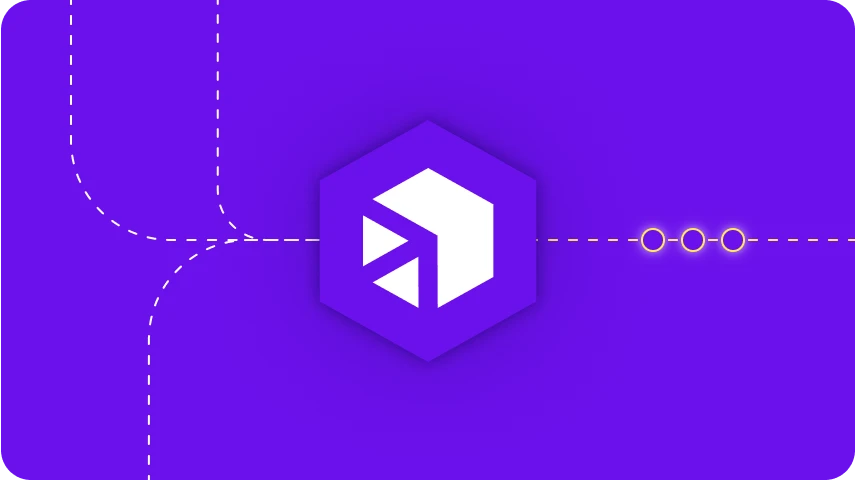January 10, 2023
As equipes de TI estão sob pressão crescente para resolver o backlog em expansão. Percebido pelos stakeholders internos como um bloqueador crítico para os negócios, a falha em executar essas iniciativas impacta o sucesso futuro da empresa. Com muitos projetos e poucos recursos ou tempo para avançar, um backlog de trabalho negligenciado também afeta a moral da equipe de TI. Ninguém gosta de um backlog.
A integração empresarial é uma capacidade crítica quando se trata de reduzir seu backlog. A tecnologia valida e transforma dados que trafegam entre os sistemas, o que, por sua vez, apoia a automação e outras eficiências essenciais para eliminar rapidamente os itens da lista.
Mas para as empresas que dependem de soluções tradicionais de integração, os backlogs de TI continuam a crescer sem alívio à vista – apesar dos altos custos da tecnologia. Esses desafios de ROI são agravados pelo investimento em recursos (treinamento e tempo) para que seus desenvolvedores consigam gerenciar a carga de trabalho significativa necessária para implementar e gerenciar a tecnologia.
>> Agende uma demonstração personalizada com nossa equipe de especialistas e veja como o iPaaS da Digibee trará eficiência ao seu negócio.
Backlogs de TI: um problema de recursos
E aqui está o problema. Depois de investir tempo e dinheiro no treinamento de alguns membros da equipe na solução – ou, pior ainda, competir no mercado aberto por novas contratações com as habilidades necessárias – não faz sentido alocar esses recursos caros para integrações de menor prioridade que compõem o seu backlog de TI.
No entanto, os donos de Linhas de Negócio (LoB) que aguardam a TI entregar o elo perdido em sua estratégia tecnológica (o elo que resolverá uma ineficiência crônica e crítica) não consideram seus projetos como de baixa prioridade. Quando a pressão aumenta, os stakeholders de LoB podem até agir por conta própria e construir suas próprias integrações usando ferramentas improvisadas, colocando a empresa em risco. E assim, a pressão sobre a TI continua a crescer.
Sim, você pode ter mais mãos disponíveis, mas apenas um subconjunto dessas mãos está qualificado para fazer o trabalho.
É aí que a Digibee entra.

Eliminando seu backlog com a Digibee
Em uma conversa recente com uma multinacional americana de bens de consumo, descobrimos mais um cenário em que desenvolvedores certificados em uma plataforma de integração tradicional precisaram dedicar todo o seu tempo a integrações de maior prioridade, deixando o trabalho do backlog de TI de menor prioridade sem ser tocado.
A empresa suporta de 20 a 30 integrações com sua plataforma existente, com cerca de 8 desenvolvedores certificados na tecnologia. Considerando o número de colaboradores, licenciamento e assinaturas, liberar recursos para resolver o backlog de TI simplesmente não era uma solução economicamente viável.
Assim que entendemos o desafio, o papel da Digibee na cadeia de valor de TI ficou claro. Em vez de desviar recursos caros de projetos de maior prioridade, a tecnologia iPaaS da Digibee poderia gerenciar e entregar as integrações menos urgentes (mas importantes).
Isso faz sentido por vários motivos:
- Digibee é rápida, reduzindo o tempo de implementação em até 70%, permitindo que você comece a queimar seu backlog de TI em semanas, em vez de meses ou anos, acelerando sua transformação digital.
- Digibee é econômica, com um modelo de precificação simples (menos de cinco SKUs no total) alinhado ao seu fluxo de dados, sem cobranças adicionais por serviços de implementação para arquitetar + construir + entregar suas integrações iniciais, conectores premium e monitoramento aprimorado. Não é necessário certificação ou treinamento demorado, e não há taxas extras para suporte. O que você vê é o que você recebe (e você recebe muito).
- Digibee é acessível a todos os desenvolvedores. Permitimos que todos os seus desenvolvedores (não apenas os certificados em uma solução específica) criem e implementem integrações em até 10 dias, utilizando nossa plataforma de integração low-code.
Com a Digibee cuidando do seu backlog de TI, a empresa não precisa despriorizar suas integrações de negócios importantes. Em vez disso, os membros da equipe certificados para realizar o trabalho especializado podem se concentrar nisso, enquanto a Digibee cuida do resto.
Próximos passos
Agora, não mais limitado pelo modelo tradicional de trabalho com tecnologia de integração, você tem o tempo e os recursos necessários para dar um grande impulso no seu backlog. Mas, antes de começar, aqui estão três passos importantes para ajudar a otimizar o sucesso do seu projeto:
Revise sua lista de pendências
Alguns backlogs de TI incluem projetos adicionados há muitos meses ou até anos. Faça uma revisão detalhada e garanta que os itens no seu backlog de TI ainda sejam relevantes. Elimine os que são redundantes ou que não oferecem valor. Aproveite a oportunidade para classificar todos os itens restantes na lista para que sua equipe de projeto do backlog se concentre nas iniciativas mais importantes ou de maior valor primeiro, seguindo a ordem na lista.
Aproveite a nuvem
Sempre que possível, priorize projetos do backlog que se concentram em mover aplicações legadas para a nuvem. A velocidade e a eficiência da infraestrutura baseada em nuvem oferecerão valor duradouro, ajudando a resolver os pontos críticos de TI hoje e no futuro.
Avalie sua força de trabalho
Depois de validar (e, esperançosamente, reduzir) seu backlog, identifique as habilidades e conhecimentos necessários para concluir os projetos. Os clientes da Digibee utilizam pessoal menos experiente para gerenciar uma parte significativa do trabalho. Esse modelo permite que seus desenvolvedores seniores se concentrem nas atividades de maior valor, enquanto membros mais juniores lidam com a maior parte do trabalho.
Para um mergulho profundo em todos os benefícios de escolher a solução moderna de integração da Digibee para apoiar seu backlog de TI, incluindo comparações detalhadas entre o modelo tradicional da MuleSoft e a Digibee, leia o white paper: 5 (+1) Razões para Escolher uma Solução de Integração Moderna.
Para mais informações, visite nosso site, leia nossos cases de sucesso de clientes, ou entre em contato e agende uma demonstração.








